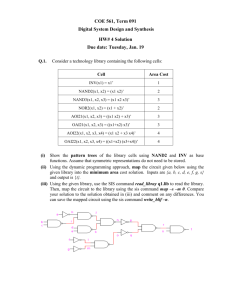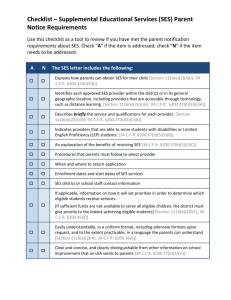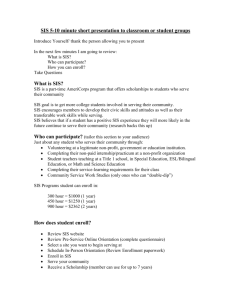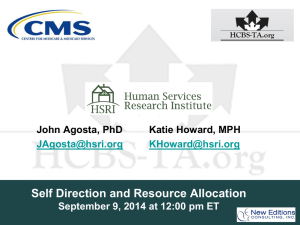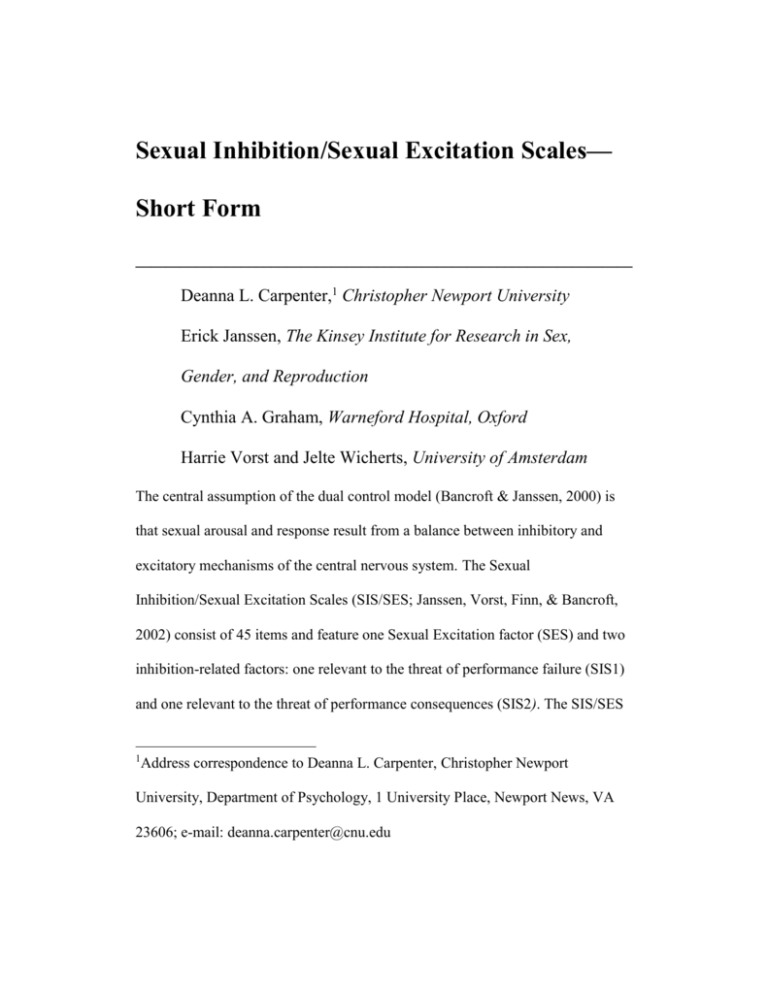
Sexual Inhibition/Sexual Excitation Scales—
Short Form
__________________________________________________________________
Deanna L. Carpenter,1 Christopher Newport University
Erick Janssen, The Kinsey Institute for Research in Sex,
Gender, and Reproduction
Cynthia A. Graham, Warneford Hospital, Oxford
Harrie Vorst and Jelte Wicherts, University of Amsterdam
The central assumption of the dual control model (Bancroft & Janssen, 2000) is
that sexual arousal and response result from a balance between inhibitory and
excitatory mechanisms of the central nervous system. The Sexual
Inhibition/Sexual Excitation Scales (SIS/SES; Janssen, Vorst, Finn, & Bancroft,
2002) consist of 45 items and feature one Sexual Excitation factor (SES) and two
inhibition-related factors: one relevant to the threat of performance failure (SIS1)
and one relevant to the threat of performance consequences (SIS2). The SIS/SES
1
Address correspondence to Deanna L. Carpenter, Christopher Newport
University, Department of Psychology, 1 University Place, Newport News, VA
23606; e-mail: deanna.carpenter@cnu.edu
has been found to be relevant to the prediction of various aspects of sexual
response and behavior (for a review, see Bancroft, Graham, Janssen, & Sanders,
2009). Several studies have reported gender differences in SIS/SES scores.
Women tend to score higher on sexual inhibition and lower on sexual excitation
compared with men, and not all SIS/SES items may be equally relevant to men’s
and women’s arousal (Carpenter, Janssen, Graham, Vorst, & Wicherts, 2008). The
SIS/SES-Short Form (SIS/SES-SF) was designed by selecting items that represent
the three-factor structure equally well for women and men.
Description
Data were provided by 2,045 Indiana University undergraduates (1,067
women and 978 men; mean age = 19.8) who completed the 45-item SIS/SES. A
series of factor analyses using LISREL revealed a three-factor solution with equal
factor loadings for men and women, involving 19 SIS/SES items. Several
SIS/SES items showed differences in measurement characteristics between
females and males, as evidenced by differences in item intercepts and residual
variances. Therefore, only items that were fully “measurement invariant” for men
and women were selected. This procedure yielded a 14-item solution that
highlights SIS/SES themes of shared relevance to men and women. Shared SES
themes included sexual arousal stemming from social interactions (vs. less
relational activities like sexual fantasy or erotica.) SIS1 themes for both women
and men included distraction, focus on sexual performance, and past problems
with arousal. SIS1 themes of greater relevance to men (excluded from the
SIS/SES-SF) included concerns about pleasing partners sexually. For both men
and women, SIS2 themes included risk of getting caught or contracting an STD.
In contrast, concerns about pregnancy/pain were more relevant to women and are
not represented on the SIS/SES-SF. Men scored higher on SES (M = 17.1, SD =
2.8), lower on SIS1 (M = 8.2, SD = 1.9), and lower on SIS2 (M = 10.5, SD = 2.1)
than women (M = 15.0, SD = 2.8; M = 8.7, SD = 1.8; M = 12.0, SD = 2.3,
respectively; for all, p < .001). Correlations between the 45-item SIS/SES and the
14-item Short Form were identical for men and women for SES (r =.90), SIS1 (r
= .80) and SIS2 (r = .80).
Additional material pertaining to this scale, including information about
format, scoring, reliability, and validity is available in Fisher, Davis, Yarber, and
Davis (2010).
Fisher, T. D., Davis, C. M., Yarber, W. L., & Davis, S. L. (2010). Handbook of
Sexuality-Related Measures. New York: Routledge.

